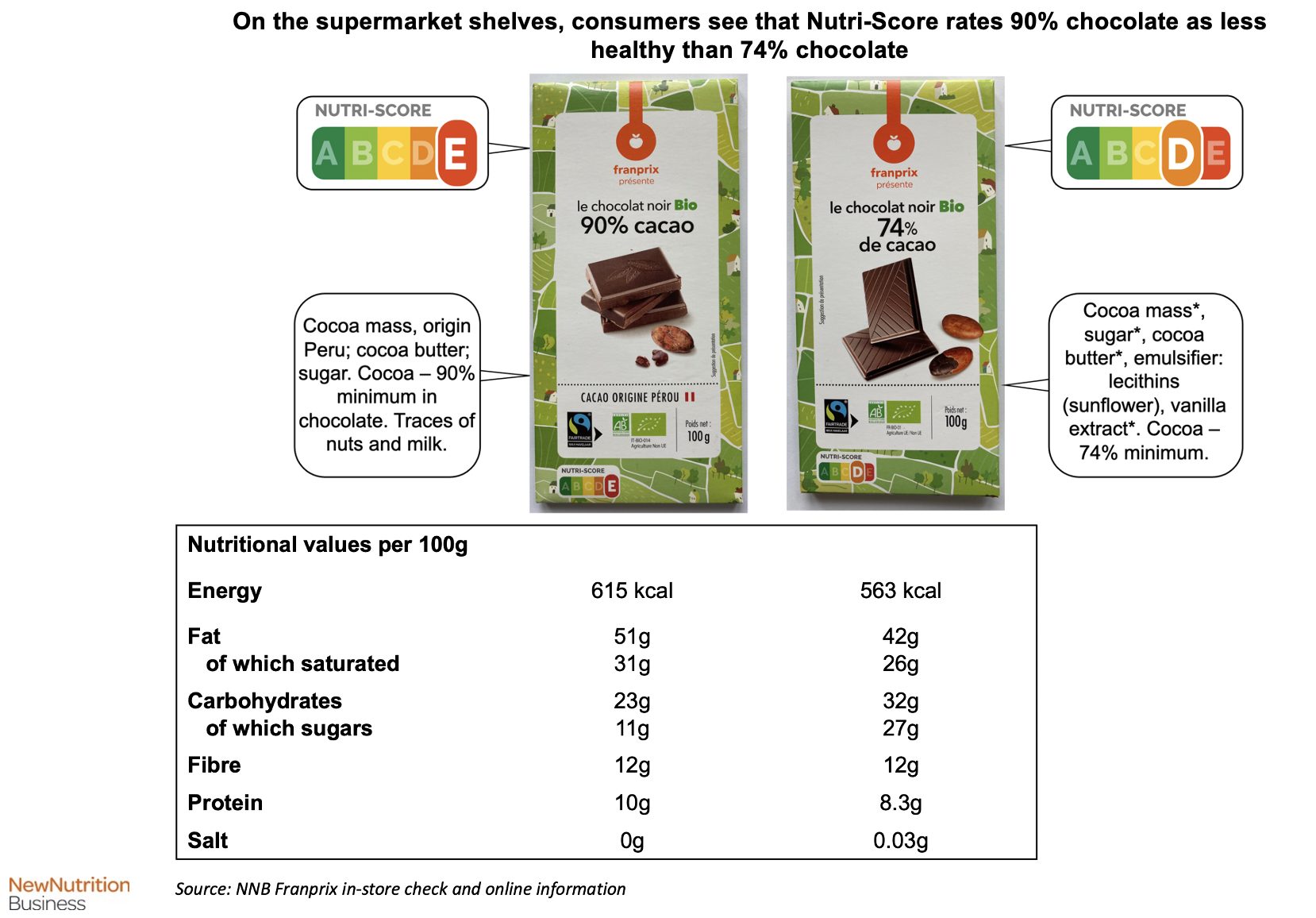Nutri-Score is Europe's notoriously ill-thought-out front-of-pack (FOP) labelling system. Retailers in France are leading its roll-out and in every aisle it's possible to see a way in which it fails. This week NNB took a walk through the confectionery aisle of our local French supermarket.
Consumers have heard for 20 years that dark chocolate is a better choice than milk chocolate, with 'the higher the cocoa content the better' a common message. Dietitians tell people that one square of dark chocolate a day is a permissible indulgence. Hence sales of dark chocolate have grown by 50% between 2015 and 2019.
Now Nutri-Score presents consumers with the new and alarming news that dark chocolate is not healthy! In the supermarket it is now always ranked a D or and E - categories of foods you should consume less of if you want to be healthy.
How so? Well, for one thing, Nutri-Score is based on the assumption that you eat 100g of chocolate at a single sitting. That’s not a joke. Nutri-Score does not take account of the way a product is actually consumed. The algorithm ranks healthfulness on the effect of consuming 100g. From time to time, we’re all tempted to eat 100g of chocolate in one go. But that's not in reality how most people eat dark chocolate. One square or even two (10g or 20g) is the reality. However, reality is not allowed to intrude into Nutri-Score's view of food or of humans.
A look at the nutrition facts (below) shows that the 90% cocoa is ranked E and the 74% ranked a less healthy D. That's in part because of the higher calorie content of the 90% cocoa. But it's mostly because of the fat content, which is higher in the 90% product than in the 74% cocoa product.

It’s also clear that the Nutri-Score algorithm rates fat as a worse ingredient than sugar. The D-rated 74% cocoa product has 27g of sugar per 100g - 150% more than the E-rated 90% cocoa.
Consumers don't know that Nutri-Score assumes you eat 100g of product at a time - there's no communication to that effect on pack, in store or anywhere else. And hence people are left with the impression that dark chocolate, is contrary to everything they have heard for 20 years, a 'bad food'.
Is it any surprise that consumers are confused? Or that many have decided that the experts don’t know what they are doing?
And thus, Europe’s public health nutrition experts demonstrate once again that their core competence lies in undermining their own credibility! There's nothing about the use of Nutri-Score that serves any public health benefit - unless you are someone who always eats 100g of chocolate at a sitting. In which case you need more help than an FOP label can provide.
To hear about the 10 ways that Nutri-Flaw fails, listen to our podcast here: https://bit.ly/3IEfRAq

